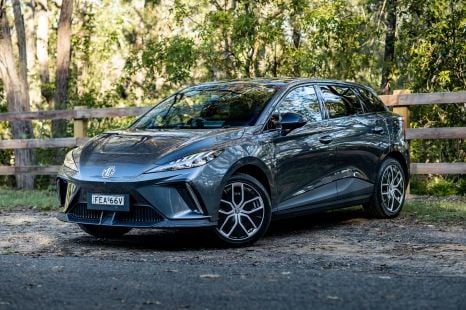

Matt Campbell
2 Months Ago
The i30 N is the first return visitor to the CarExpert test track – and the circuit performance is much improved over the old one.
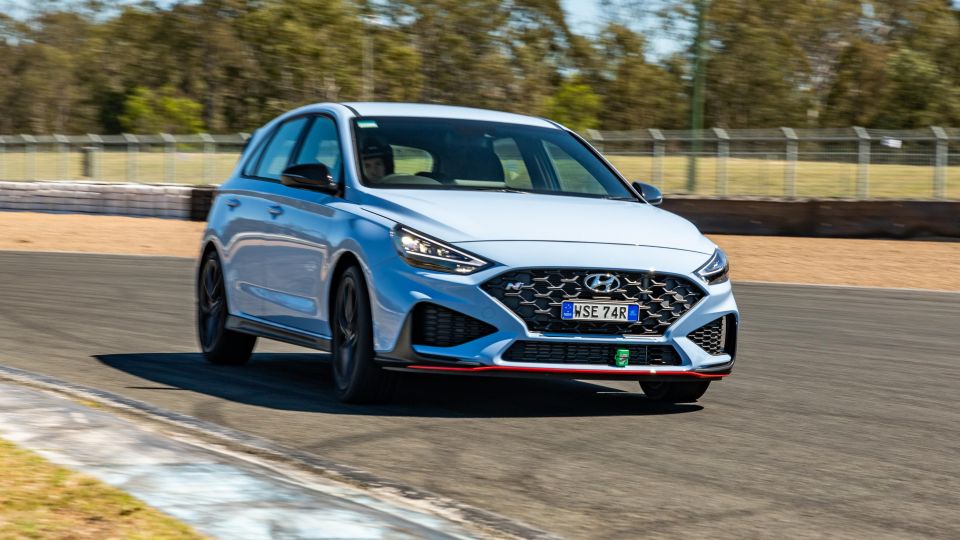


Performance Editor
New from
$20,440
excl. on-roads

Performance Editor
New from
$20,440
excl. on-roads


Performance Editor
New from
$20,440
excl. on-roads

Performance Editor
New from
$20,440
excl. on-roads
Quickly see how this car stacks up against its competition. Select any benchmark to see more details.
Take advantage of Australia's BIGGEST new car website to find a great deal on a Hyundai i30.
The Hyundai i30 N instantly fills the driver with confidence on the road. It has found a good compromise between performance and driveability, which is enhanced by the well-tuned drive modes.
Suspension control tied to improved geometry offers a dynamic handling package, that urges you to make the most of every drive.
It eats up bumps and quick changes of direction, and now handles longer radius corners with ease.
As interesting a prospect the new eight-speed DCT would be in the Hyundai i30 N, this is one of those vehicles that really engages you in the driving experience and the manual transmission is part of that.
MORE: 2022 Hyundai i30 N review

For me one of the big surprises on the leaderboard was the Hyundai i20 N Prototype we drove earlier this year, which actually beat the time set by the Hyundai i30 Fastback N, as well as a few others.
Fortunately, Hyundai noticed how good a job it had done with the i20 N and were able to take some of the mechanical design philosophy, especially the front geometry, and brought it to the Hyundai i30 N.
Hyundai also looked at the powertrain and worked to overlap the power and torque curves, which was one of my complaints from the previous model.
We shouldn’t be surprised, but all the changes have had a very positive impact on the performance of the Hyundai i30 N, especially on track.
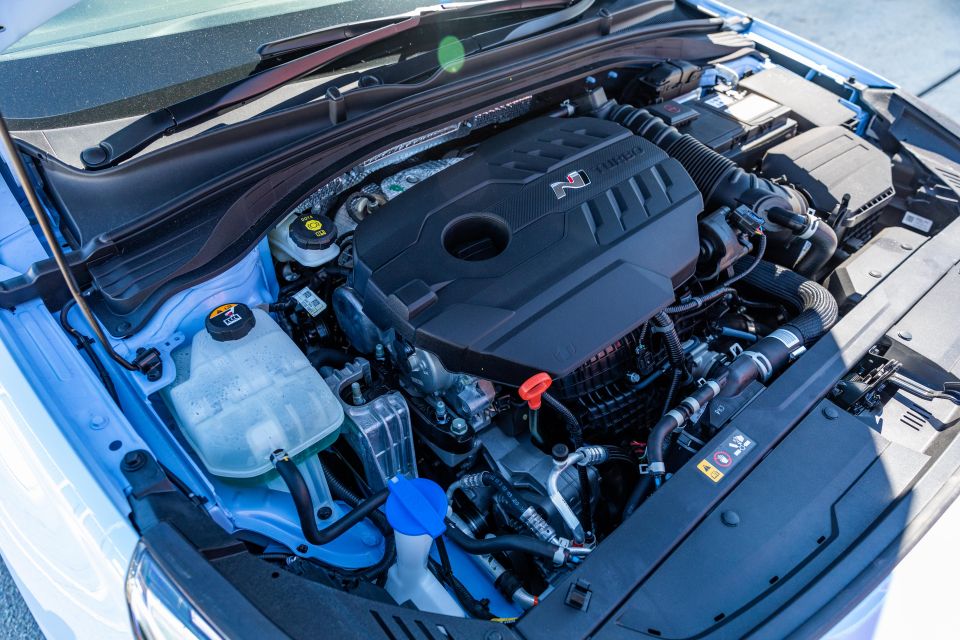
The 2.0-litre turbocharged four-cylinder engine has been made a lot more flexible and drivable.
The quoted 206kW power figure is only a 4kW gain on the previous model, and an additional 39Nm of torque takes it to 392Nm – but the peak of the power curve is flatter and now overlaps nicely as the torque drops away, creating a much stronger feeling across the rev range.
It keeps pulling across the whole rev range all the way to the shift point. Out of slower-speed corners you still have to manage your power delivery as it’s a lot to ask from the front wheels, but the chassis changes really help in this area as you can rotate the car better and then get it straight quicker.
Even in the slower corners I found it easier to add power, and if I got a little bit of wheel spin, I could control it and modulate the throttle until the grip came.
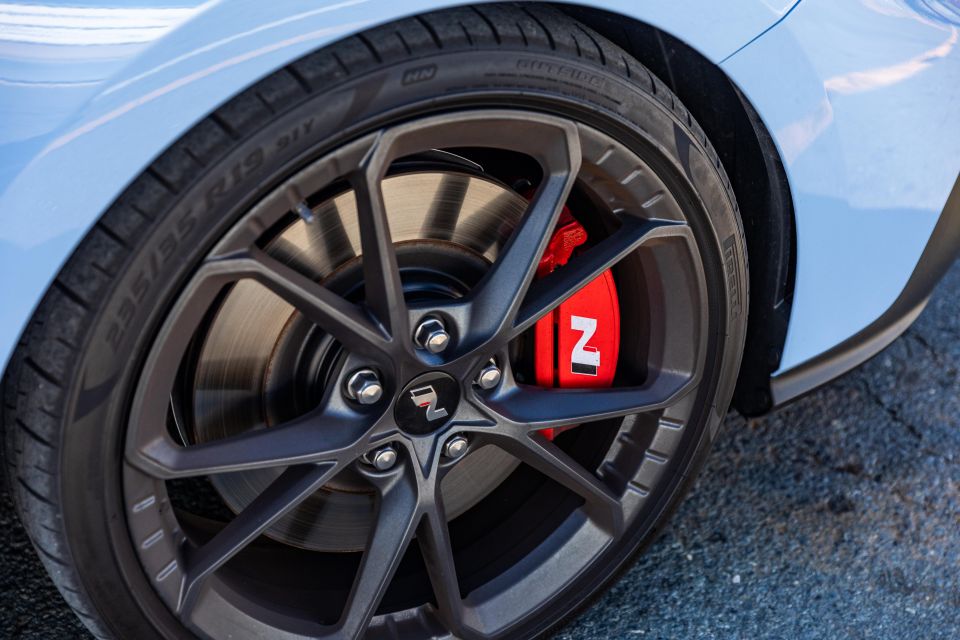
As with the previous test we did with the Hyundai i30 Fastback N, the brake pedal feel was really good and the car was very stable under brakes.
For me the stopping power could have been better, but feel like the harder compound tyre is playing a part in this.
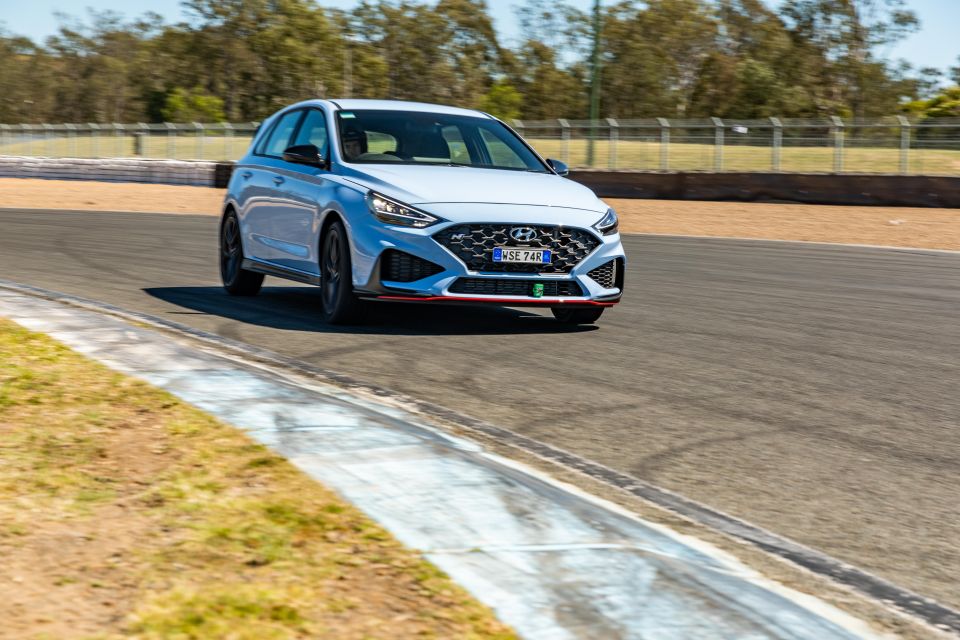
The geometry changes have made the front-end grip is so impressive and a big step over the previous model. It’s very reactive, precise and can deal much better with steering being added mid-corner.
For me, there’s a substantial elevation in confidence behind the wheel and could use every inch of the track without ever putting a foot wrong.
The increased confidence from the front end allowed me to carry a lot more overall corner speed, but by far the biggest gains were in the slower-speed corners. I could add steering input and rotate the car while loaded in the corner much better and as a result both the entry and exit speeds increased dramatically.
The nice part about the rear of the car is it’s supported enough to allow rotation to occur, yet still maintains a progressive feeling when it starts to slide. This basically means to don’t have to think too much about the rear of the car and you can really attack, focusing on what the front is doing.
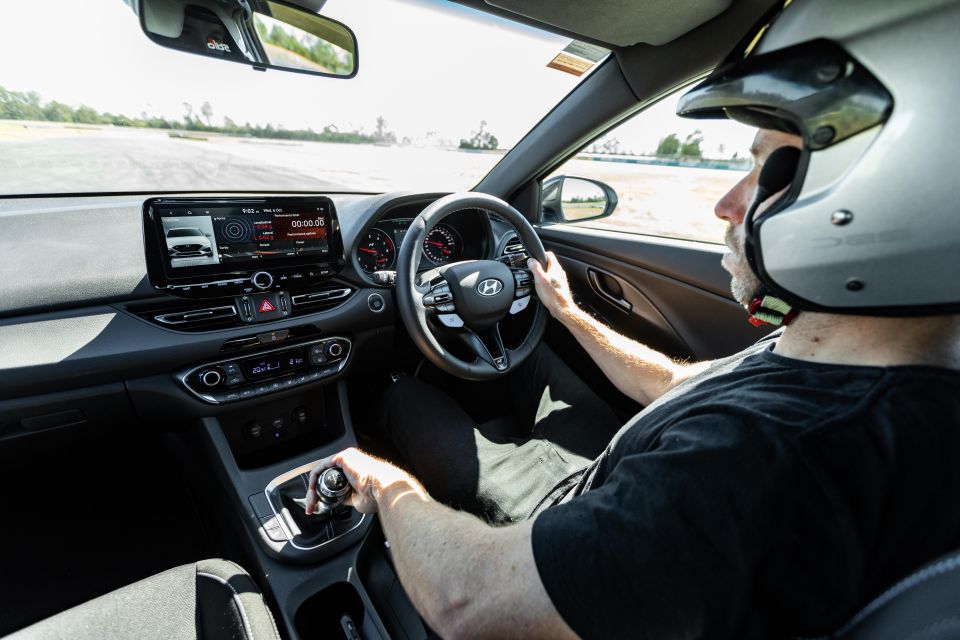
Interestingly, I enjoyed the six-speed manual in the Hyundai i30 N a lot more this time and never had any issues with shifting. With the engine being a lot more driveable I wasn’t having to rush my shifts as much and really rev it out, so I’m sure that played a part.
I still look forward to driving the DCT-equipped i30 N, but somehow feel the Hyundai i30 N is one of those cars that wants to be driven hard and there is a certain satisfaction shifting a proper manual transmission.
I tried the differential in both Normal and Sport mode and actually did almost the same time in both, but with two completely different feelings.
In Normal mode the electronically-controlled mechanical LSD was a little bit freer into and through the middle of the corner, and then lacked some traction on the exit, while the more aggressive Sport mode made the i30 N more challenging on corner entry, even causing some oversteer, but with excellent traction on corner exit.
It’s great to have these options and adjustability, but it really depends on the track layout as to which one is better. In this situation they cancelled eachother out.
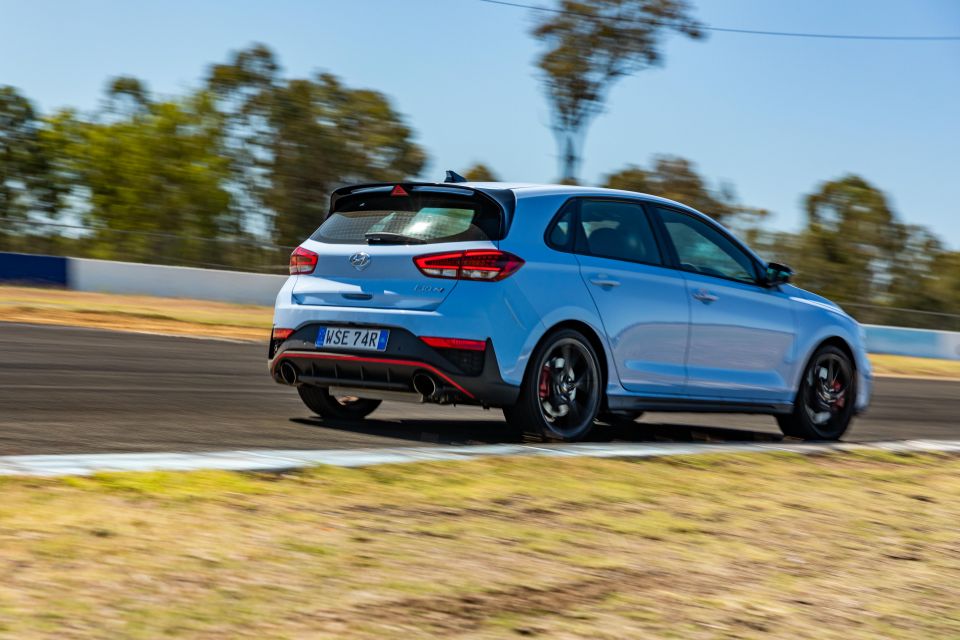
The Hyundai i30 N uses an adaptive damper system that worked very well. I didn’t even notice all the adjustments it was making on the move, which is a great sign that they have really sorted the system.
Hyundai have actually stiffened the spring rates in the car, but re-valved the dampers at the same time to maintain comfort on the road. Both on the road and on the track, I was amazed at how well you could attack bumps or curbs and the car would still maintain its composure without overreacting.
The body control on the track was excellent and I actually preferred the suspension in the slightly softer Sport mode, not the Sport+ mode on our test track.
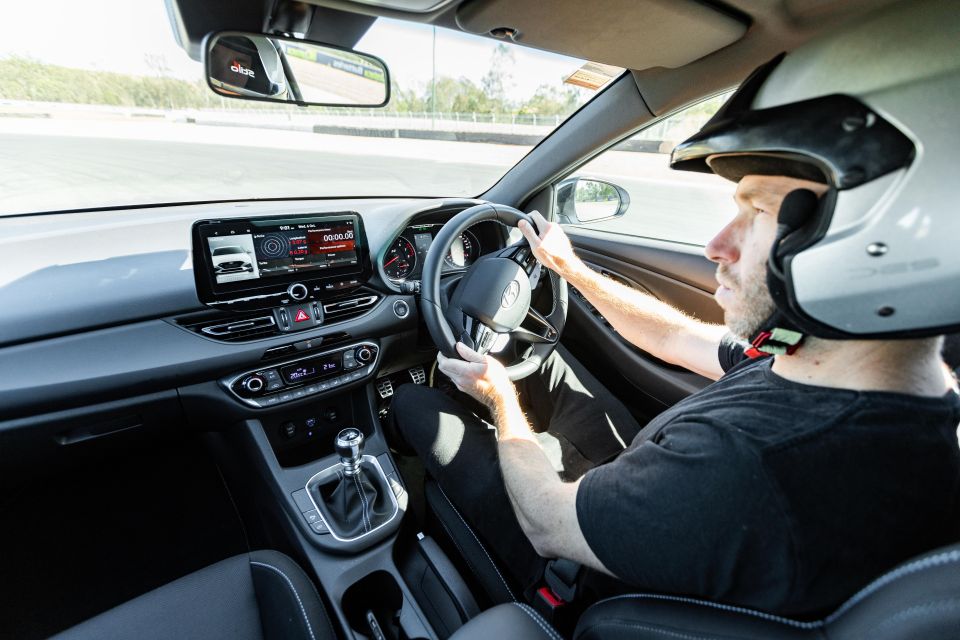
The steering was nice and precise with excellent feedback.
This played a huge role in my ability to take the Hyundai i30 N right to the edge of the track without ever feeling like I would overshoot it.
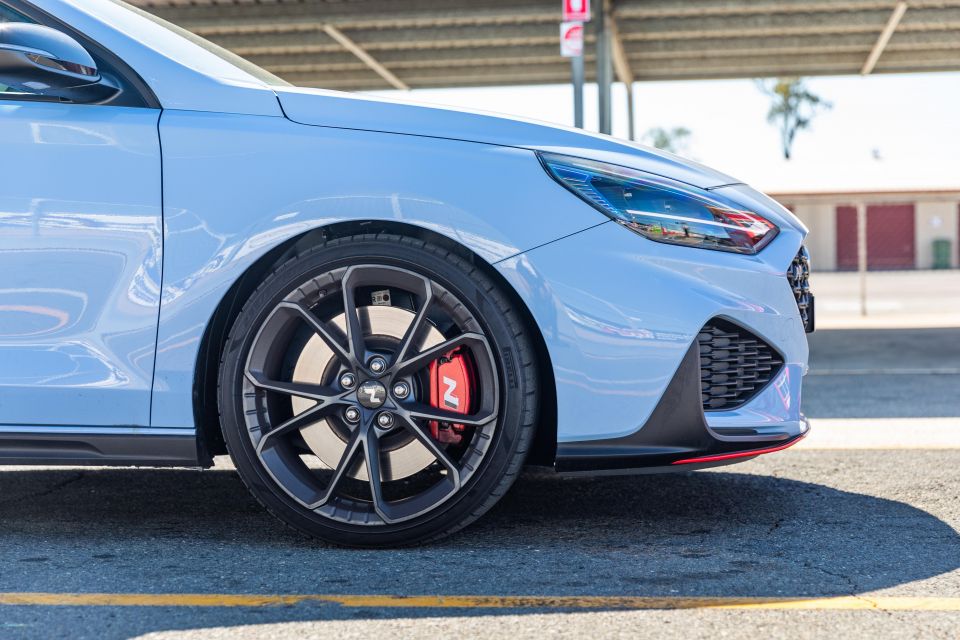
Once again the Hyundai i30 N was running the specifically-designed 235/35 R19 Pirelli P-Zero tyres, which have the HN logo on the side. They are a slightly harder compound than normal, with the idea that they will last longer on a track day.
Laterally they are very good, and the cool thing is I was actually able to do my fastest laps at the end of our time on the track.
I do feel like the outright performance is slightly compromised with this choice of compound, but the gain in durability is a nice thought for owners.
I ran with traction and stability control off, but I do advise when you are starting out on track to leave them on.
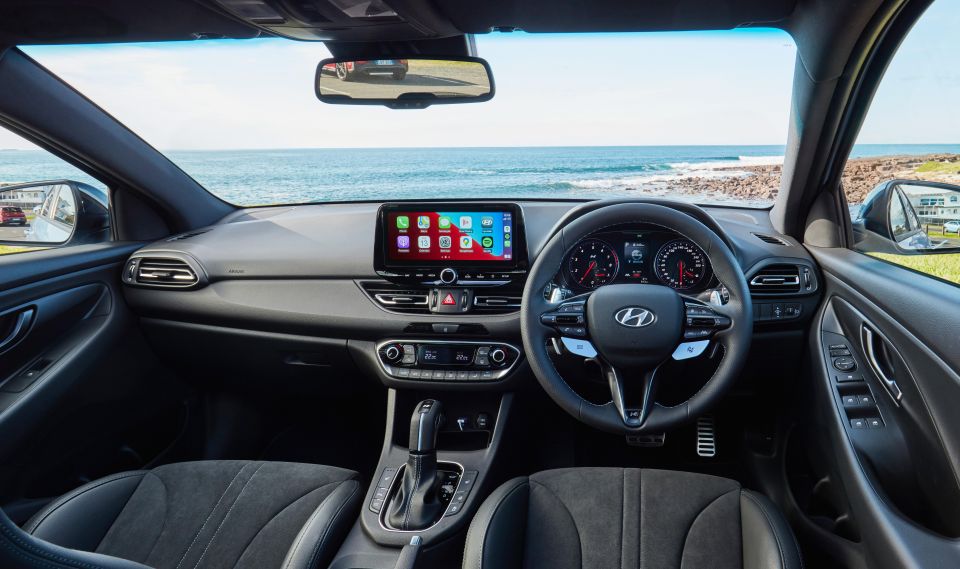
With this being the non-premium version of the Hyundai i30 N, we missed out on the high-performance N Light bucket seats.
For a standard seat, they still offered a reasonable amount of support on the track, but would definitely go the more premium ones if I had a choice.
I love having the N mode buttons on the steering wheel, with the ability to switch between modes easily on the go.
The shift light worked perfectly, and I also liked having so many track focused features in the menu.
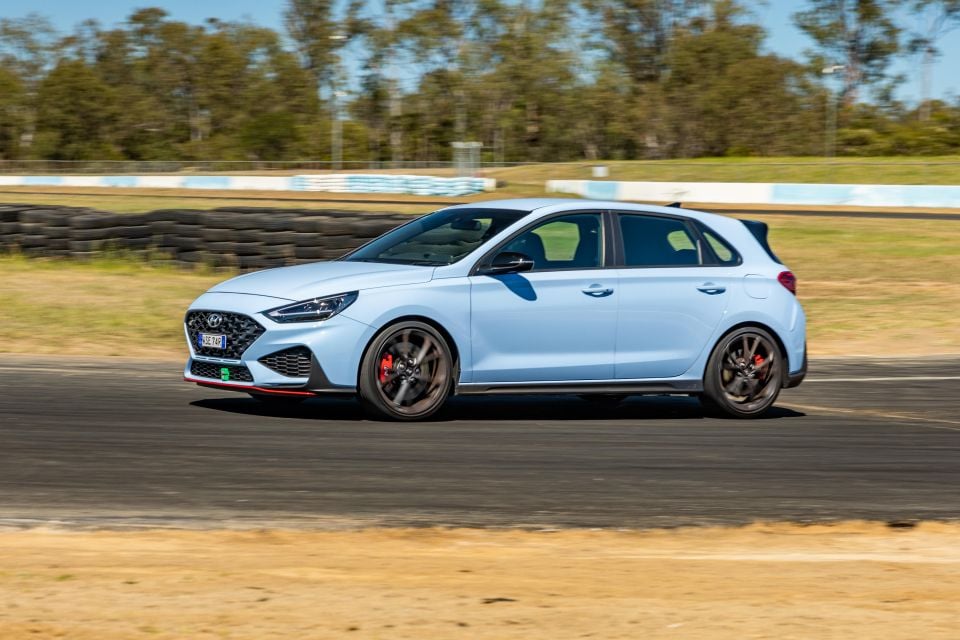
I think you can tell by now this facelifted Hyundai i30 N is a lot more than just a ‘facelift’.
Firstly, I was impressed with the consistency of the lap times I could produce in the Hyundai i30 N, with nearly every lap time being within one tenth of second.
Secondly, I was impressed with the effort the Hyundai has gone to improve the track performance of the i30 N. The company hasn’t just thrown horsepower at the problem, it has looked at making this a better overall package with improved fundamentals.
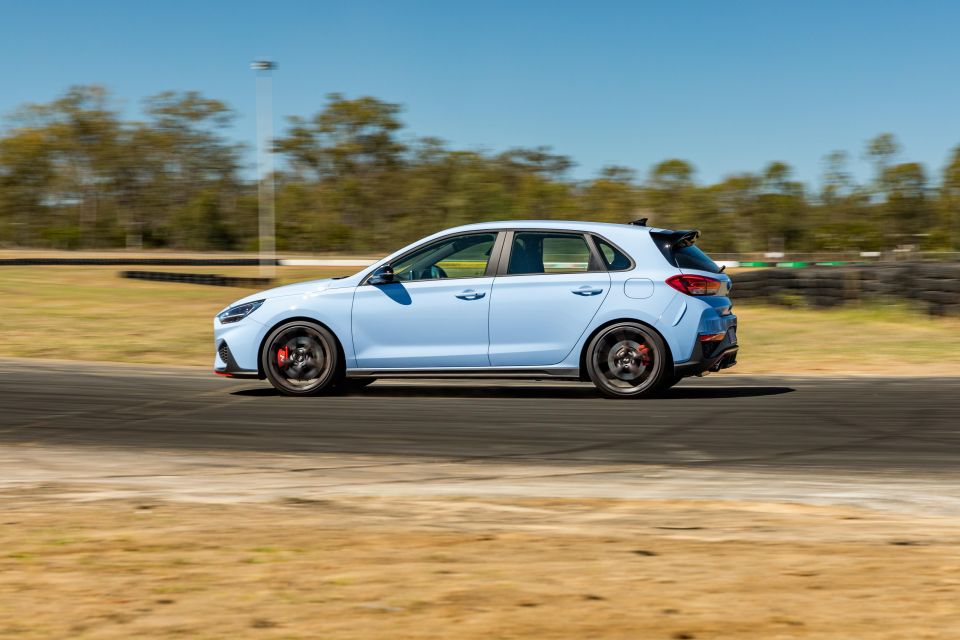
Finally, I was impressed with the improvement in lap time. I knew as soon as I started the first lap that I would be quicker than the previous version, and it was by quite some margin – 60.70 seconds (nearly 1.3 seconds faster!) takes it straight to the top of the front-wheel drive hot hatch times.
Now as much as lap time is important, the way you can drive the Hyundai i30 N is even more so. This is a car you can attack with and learn from. It offers great feedback you can clearly see it has been designed to be driven.
If you have, or have a Hyundai i30 N, get involved in events like the Hyundai N Festival and use the car how the brand intend it to be used!
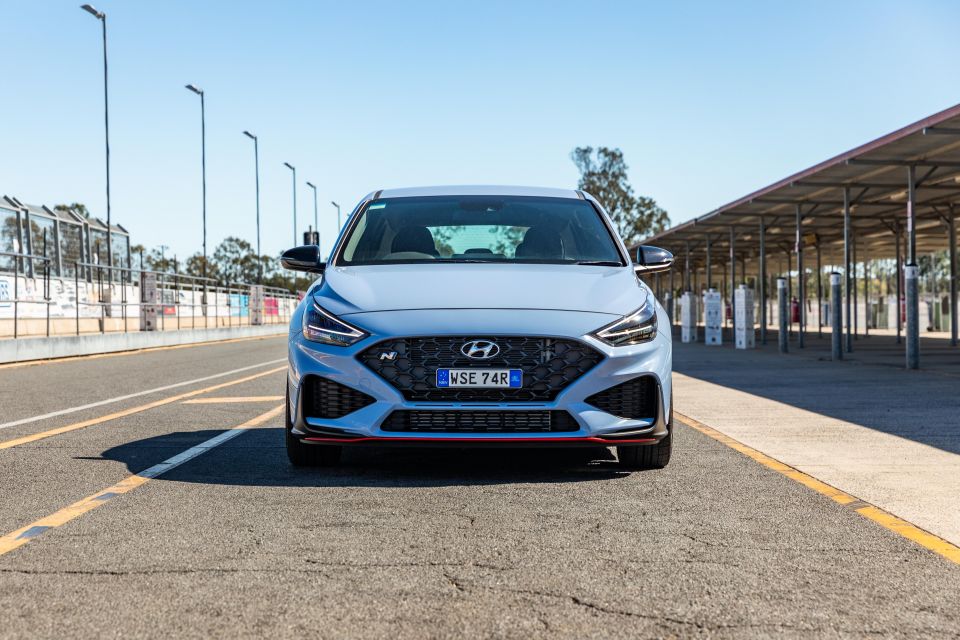
Click the images for the full gallery
MORE: Everything Hyundai i30
Take advantage of Australia's BIGGEST new car website to find a great deal on a Hyundai i30.


Matt Campbell
2 Months Ago
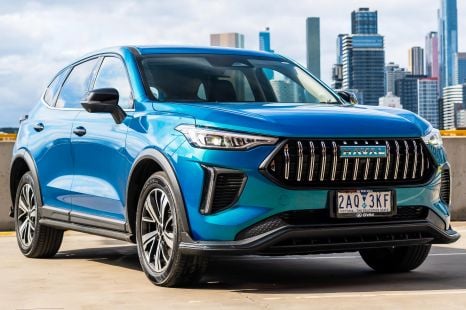

Max Davies
1 Month Ago
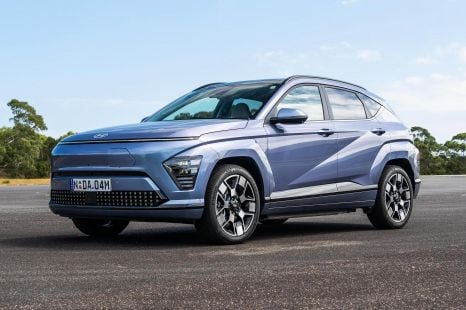

Scott Collie
1 Month Ago
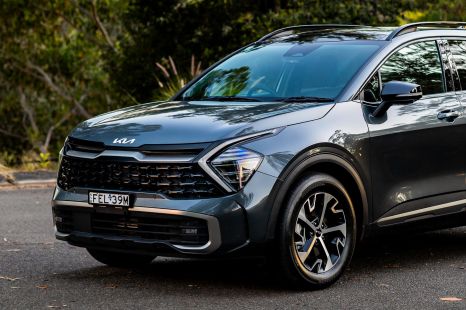

Matt Campbell
1 Month Ago
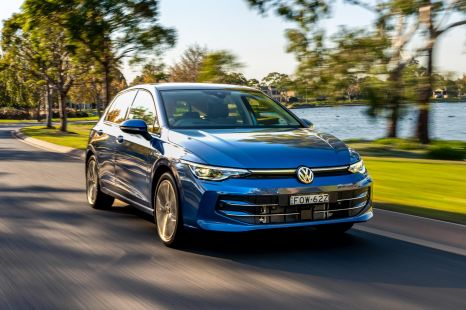

James Wong
26 Days Ago
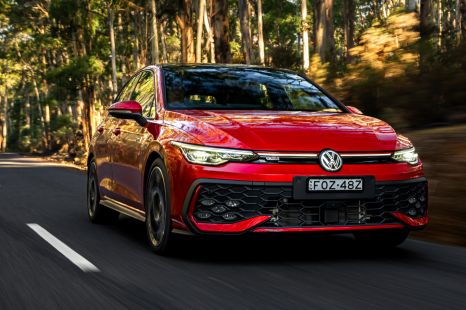

James Wong
25 Days Ago